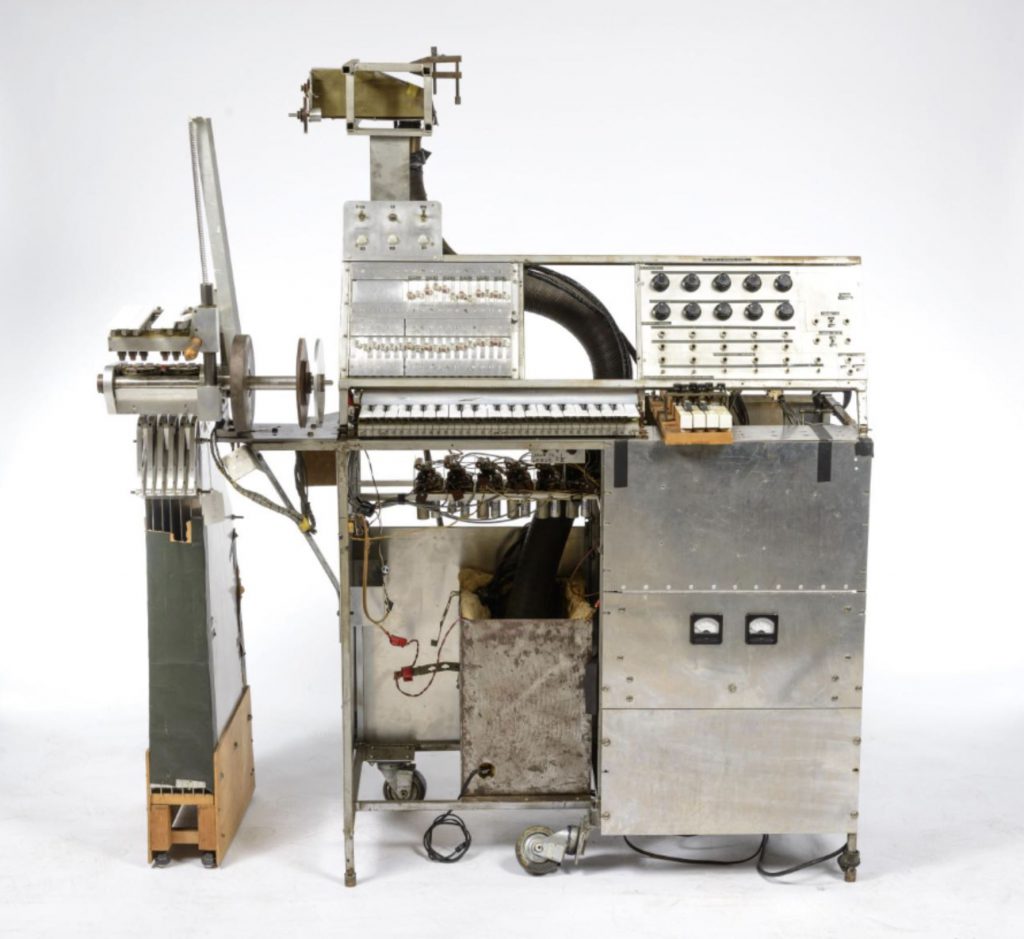Artefacts
Special Purpose Tape Recorder
Special Purpose Tape Recorder
(Accession Number: 1991.0219)
Dimensions: Height = 158cm, Length = 139cm, Width = 86cm
Condition: Mechanical components in good condition, with some exceptions. Electronic components in fair condition.
The Special Purpose Tape Recorder (or Multi-track) was the first studio-oriented instrument designed by Canadian physicist Hugh Le Caine and built in the National Research Council of Canada’s (NRC) Electronic Music (ELMUS) Lab in Ottawa, Canada. It was created to afford composers the opportunity to alter and recombine pre-recorded sounds into a single musical output. This prototype version of the instrument used a three-octave keyboard to control the speeds of six tapes simultaneously, and then mix them down into a single recording.
Central to the Special Purpose Tape Recorder’s functionality was its ability to adjust the playback speed of several different tape recordings at once, thus permitting the composer to create new musical expressions from individual pre-recorded sounds. This approach to musical composition was inspired by musique concrète and contributed not only to Le Caine’s realization of the Special Purpose Tape Recorder’s design, but also his own landmark electronic music composition Dripsody, which he created in 1955 to demonstrate the instrument. To compose this piece, Le Caine recorded the sound of a single water droplet, copied it onto several tapes, and then used the Special Purpose Tape Recorder to play several reels of tape simultaneously as he adjusted the playback speed through a keyboard. He produced several unique musical compositions in this way without using a single conventional musical instrument.
Le Caine’s innovative means of controlling playback speed through a standard keyboard provided an intuitive interface that musicians could easily predict. Changing the note by an octave would double the playback speed and change the sound by an octave. This also applied to other intervals such as thirds. The versatile and comprehensive functions of the instrument were not otherwise available before samplers appeared in the 1980s.
The Special Purpose Tape Recorder shown here is the prototype version of the instrument. It was built in 1955 at the NRC’s ELMUS Lab and later transferred to the University of Toronto Electronic Music Studio (UTEMS) in 1959. After the ELMUS Lab, UTEMS was the second electronic music studio established in Canada. Later versions of the instrument included a built-in stereo mixer and touch-sensitive printed-circuit keys to control volume levels.
In 1991 the University of Toronto donated the Special Purpose Tape Recorder prototype to the National Museum of Science and Technology in Ottawa, Canada (now Ingenium – Canada’s Museums of Science and Innovation) where it resides today. In total, five Special Purpose Tape Recorders were built, the last in 1967. Four of the five are now in Ingenium’s permanent collection. The location of the remaining instrument, sent to an electronic music studio in Israel as a gift from Canada, remains unknown. The 1955 prototype is currently on loan and on display at the National Music Centre in Calgary, Canada.
© 2015 – 2024 Humboldt-Universität zu Berlin






